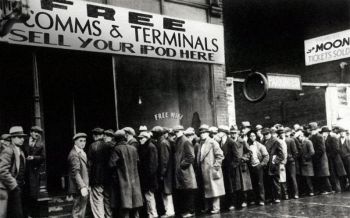“The stock market has risen steadily since November without any sort of significant pullback.
Since May 22, however, there’s been an exciting twist: stocks have been going down.
At yesterday’s closing level of 1609, the S&P 500 is now down 4.6% from the 1687 high on May 22.
Miller Tabak’s Chief Technical Market Strategist Jonathan Krinsky says now, “all eyes are on the [S&P 500’s 50-day moving average],” and asks, “Will it hold?”
In a note to clients this morning, Krinsky writes:
We have been looking for the SPX to test its 50 DMA, which currently sits at 1604. Specifically, on Monday we wrote:
“…as we look ahead into June, we think the odds of an 8th consecutive monthly gain become slim. That is not to say we are expecting a major downturn, but we think a test of the still rising 50 DMA around 1600 should not be surprising. 1597-1600 also represents the April highs. Below that, the 1576 area will likely be defended as it was prior resistance from October 2007, and represents a major multi-year breakout level.” …”
Comments »
